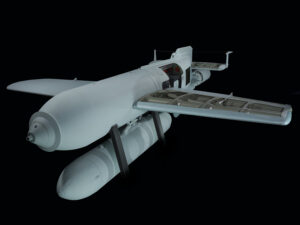
 The HMT Rohna, originally known as SS Rohna, was a passenger and cargo liner belonging to the British India Steam Navigation Company. Constructed in Tyneside in 1926, it was one of two new vessels ordered by the British India Line in 1925 for its Madras–Nagapatam–Singapore route. These sister ships had slight variations…being built at different shipyards with different engines. Hawthorn Leslie and Company constructed the Rohna in Hebburn on Tyneside, while Barclay, Curle and Company built the Rajula in Glasgow on Clydeside. The two ships were completed and launched around the same time in mid-1926.
The HMT Rohna, originally known as SS Rohna, was a passenger and cargo liner belonging to the British India Steam Navigation Company. Constructed in Tyneside in 1926, it was one of two new vessels ordered by the British India Line in 1925 for its Madras–Nagapatam–Singapore route. These sister ships had slight variations…being built at different shipyards with different engines. Hawthorn Leslie and Company constructed the Rohna in Hebburn on Tyneside, while Barclay, Curle and Company built the Rajula in Glasgow on Clydeside. The two ships were completed and launched around the same time in mid-1926.
The Rohna was launched on August 24, 1926, and her construction was completed by November 5. Named after a village in Sonipat, Punjab, India, she featured 15 corrugated furnaces heating five single-ended boilers, which together had a heating surface of 14,080 square feet. These boilers supplied steam at 215 lbf/in^2 (pounds per square inch) to two four-cylinder quadruple expansion steam engines, yielding a combined power of 984 Nominal Horsepower (NHP). Each engine propelled one of the ship’s twin screws, enabling the Rohna to achieve 984 NHP or 5,000 Indicated Horsepower (IHP). On her sea trials, she reached 14.3 knots (2, with a cruising speed of 12.5 knots). By 1934, the Rohna was equipped with wireless direction-finding equipment.
As the United Kingdom entered the World War II in September 1939, the Rohna was navigating the Indian Ocean. Other than a journey from Karachi to Suez with Convoy K 4, the Rohna sailed unescorted between Rangoon and Madras until the end of November. Departing Bombay on December 10th, she headed for the Mediterranean, transited the Suez Canal on December 20-21, and arrived in Marseille on December 26th. From January 3, 1940, to March 10th, she moved unescorted between Marseille and the Port of Haifa in Mandatory Palestine, initially as part of convoys but later, after January 29th, on her own.
On March 15, 1940, the Rohna sailed back through the Suez Canal to the Indian Ocean, where she operated unescorted between Bombay, Rangoon, and Colombo until June. In May, she was requisitioned as a troop ship, and on June 6th, she departed from Bombay to Durban. She continued to operate between Durban, Mombasa, and Dar es Salaam until July 28th, when she embarked from Mombasa to return to Bombay.
The Rohna transported troops from Bombay to Suez in August 1940 with Convoy BN 3, and from Bombay to Port Sudan in September/October 1940 with Convoy BN 6. Subsequent journeys included Bombay to Suez in November 1940 with Convoy BN 8A, Colombo to Suez in February 1941 with Convoy US 8/1, and Bombay to Singapore in March 1941 with Convoy BM 4. Following the Iraqi coup d’état in April 1941, the Rohna was directed to Karachi, from where she transported early units of Iraqforce to Basra in Convoy BP 2. During the Anglo-Iraqi War in May, she completed a second voyage from Karachi to Basra with Convoy BP 5. After the Allied triumph in Iraq at May’s end, she continued shuttling between Basra and Bombay, departing to Basra with BP-series convoys and returning independently.
On December 8, 1941, Japan invaded Malaya. The following month, Rohna departed Bombay for Singapore with Convoy BM 10, arriving on January 25, 1942. She set sail on January 28 in Convoy NB 1, two weeks before Singapore fell to Japan. From March 1942, Rohna spent a year navigating the Indian Ocean, visiting Bombay, Karachi, Colombo, Basra, Aden, Suez, Khorramshahr, Bandar Abbas, Bahrain, and Abadan, sometimes as part of convoys, often unescorted. In March 1943, she embarked from Bombay with Convoy BA 40 to Aden, then proceeded independently to Suez, passing through the canal on April 6–7.
Throughout the rest of her service, Rohna was instrumental in supporting the North African Campaign, as well as the Allied invasions of Sicily and Italy. Until early July, she operated independently, navigating between Alexandria, Tripoli, and Sfax. She primarily joined convoys, plying the routes between Alexandria, 
 Malta, Tripoli, Augusta, Port Said, Bizerte, and Oran.
Malta, Tripoli, Augusta, Port Said, Bizerte, and Oran.
Her requisition as a troop carrier in 1940, at the onset of World War II, placed a target of sorts on her back, and in November 1943, the Rohna was sunk in the Mediterranean by a Henschel HS 293 guided glide bomb launched from a Luftwaffe aircraft. The attack resulted in the deaths of over 1,100 individuals, the majority being United States troops.


Leave a Reply